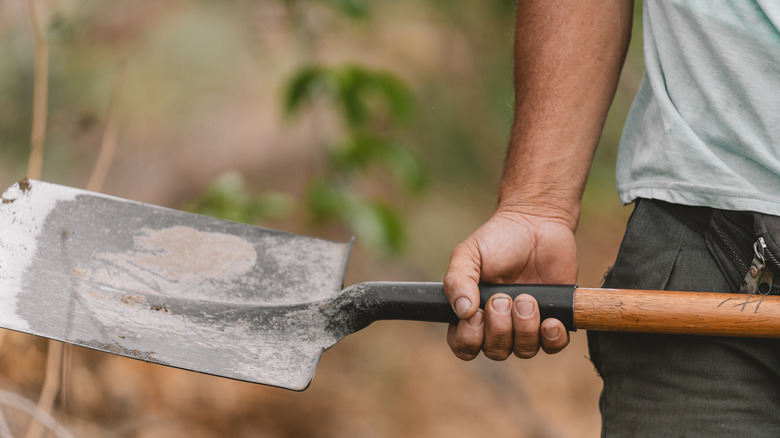Easily Eliminate Ant Hills In Your Yard With An Essential Tool You Already Own
We may receive a commission on purchases made from links.
It is normal to come across an ant hill (nest) in your yard from time to time. Ants build the nests from beneath the ground and deposit the excess dirt at the top. As a result, the nests often look like small piles of dirt around your yard, and they can grow taller or wider over time. Ants can also build their nests within garden beds, in between the cracks of a concrete walkway, and even next to the structure of your home. It turns out that you may be able to solve ant hill problems by destroying them with a shovel or rake you already own.
There are several ways you can get rid of ant nests in your yard, including chemical and physical methods. You might not always need to use chemicals, though. In fact, some experts recommend using physical force to destroy the nests first. The idea behind using a large gardening tool like a rake or a shovel is to flatten the area and disrupt the ants so they will retreat elsewhere. Overall, this method can be considered a more targeted strategy to stop an ant hill from getting larger, while temporarily controlling the ant population. You might also consider using this in conjunction with natural ways to get rid of ants without poisons.
How to use simple garden tools to remove ant hills
Proponents of the gardening tool strategy for ant control recommend taking either a rake or shovel and then quickly flattening the ant hills back to ground level. Hold either tool by the handle as normal and then use the metal edge against the nests. You may also be able to remove the entire hill from underneath the ground with a shovel, then carefully follow up with hot water as another sneaky trick when dealing with ant nests. Once you have flattened the hill, check over the next few days to see if the ants have indeed left. If there are still signs of ants or more nest-building, you can repeat the flattening process over again.
If you still have problems with ant hills in your yard, and if it is a particularly widespread problem, you might consider consulting a pest control expert for advice. As a final caveat, physical removal methods should be used with care if you are dealing with fire ants nests. Fire ants are most common in the southern and southeastern regions of the U.S., and their stings can cause allergic reactions in some people.

